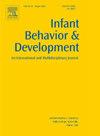Extended kangaroo mother care – Examining the utility of skin-to-skin contact over the first year of life
IF 1.9
3区 心理学
Q3 PSYCHOLOGY, DEVELOPMENTAL
引用次数: 0
Abstract
Objectives
Kangaroo mother care which involves skin-to-skin contact (SSC) between mothers and newborns with support for exclusive breastfeeding, is an important innovation if practiced beyond the first week of life up to 1-year of age. We posit that extended SSC can benefit postpartum metabolic health.
Study design
Using a narrative literature review, we examine the interaction between hormones oxytocin and cortisol, which are either released or antagonized by the neural actions of skin-to-skin contact.
Results
Oxytocin is released during SSC, which promotes attachment, improves parent-infant interactions and lowers levels of cortisol. No studies to date have reported SSC use beyond the first 5 to 7 weeks postpartum. Although no differences have been observed in infant body weight, increased head circumference has been noted among pre-term and low birth weight infants. Improved breastfeeding outcomes have also been observed. Oxytocin release is protective against type-2 diabetes and obesity in postpartum women, given its effects on β-cell function, improved insulin response and reduction of plasma glucose levels. Oxytocin has anti-inflammatory, analgesic and thermoregulatory effects. Hypothetical benefits due to oxytocin-cortisol dynamics, can be assumed for maternal posttraumatic stress, postpartum depression and anxiety. Sleep patterns, duration of crying and length of sleep are dose-dependent in effect. Postnatal skin-brain connection and thermoregulation via epidermal keratinocytes may mediate the relationship between SSC and autism spectrum disorder.
Conclusions
The extended use of SSC can lower dependence on pharmacotherapeutic options concerning postpartum mental health and galactagogue use while supporting maternal-infant psychosocial well-being and lowering stress via hormonal action and HPA-axis activation.
延长袋鼠妈妈护理-检查皮肤对皮肤接触的效用在生命的第一年
袋鼠式母亲护理涉及母亲和新生儿之间的皮肤接触(SSC),并支持纯母乳喂养,如果在生命的第一周之后直至1岁时实施,则是一项重要的创新。我们认为,延长SSC可以促进产后代谢健康。研究设计:通过文献回顾,我们研究了催产素和皮质醇激素之间的相互作用,这两种激素通过皮肤接触的神经活动释放或拮抗。结果SSC过程中释放催产素,促进依恋,改善亲子互动,降低皮质醇水平。到目前为止,还没有研究报告SSC的使用超过产后5至7周。虽然在婴儿体重方面没有观察到差异,但在早产儿和低出生体重婴儿中已经注意到头围增加。母乳喂养结果也有所改善。鉴于催产素对β细胞功能、改善胰岛素反应和降低血浆葡萄糖水平的影响,它的释放对产后妇女预防2型糖尿病和肥胖具有保护作用。催产素具有抗炎、镇痛和体温调节作用。假设的好处由于催产素皮质醇动力学,可以假设产妇创伤后应激,产后抑郁和焦虑。睡眠模式、哭闹持续时间和睡眠时长实际上是剂量依赖性的。出生后表皮角质形成细胞的皮脑连接和体温调节可能介导SSC与自闭症谱系障碍的关系。结论延长使用SSC可降低产后心理健康和催乳剂使用对药物治疗方案的依赖,同时通过激素作用和hpa轴激活支持母婴心理社会健康和降低应激。
本文章由计算机程序翻译,如有差异,请以英文原文为准。
求助全文
约1分钟内获得全文
求助全文
来源期刊

Infant Behavior & Development
PSYCHOLOGY, DEVELOPMENTAL-
CiteScore
4.10
自引率
4.80%
发文量
94
期刊介绍:
Infant Behavior & Development publishes empirical (fundamental and clinical), theoretical, methodological and review papers. Brief reports dealing with behavioral development during infancy (up to 3 years) will also be considered. Papers of an inter- and multidisciplinary nature, for example neuroscience, non-linear dynamics and modelling approaches, are particularly encouraged. Areas covered by the journal include cognitive development, emotional development, perception, perception-action coupling, motor development and socialisation.
 求助内容:
求助内容: 应助结果提醒方式:
应助结果提醒方式:


